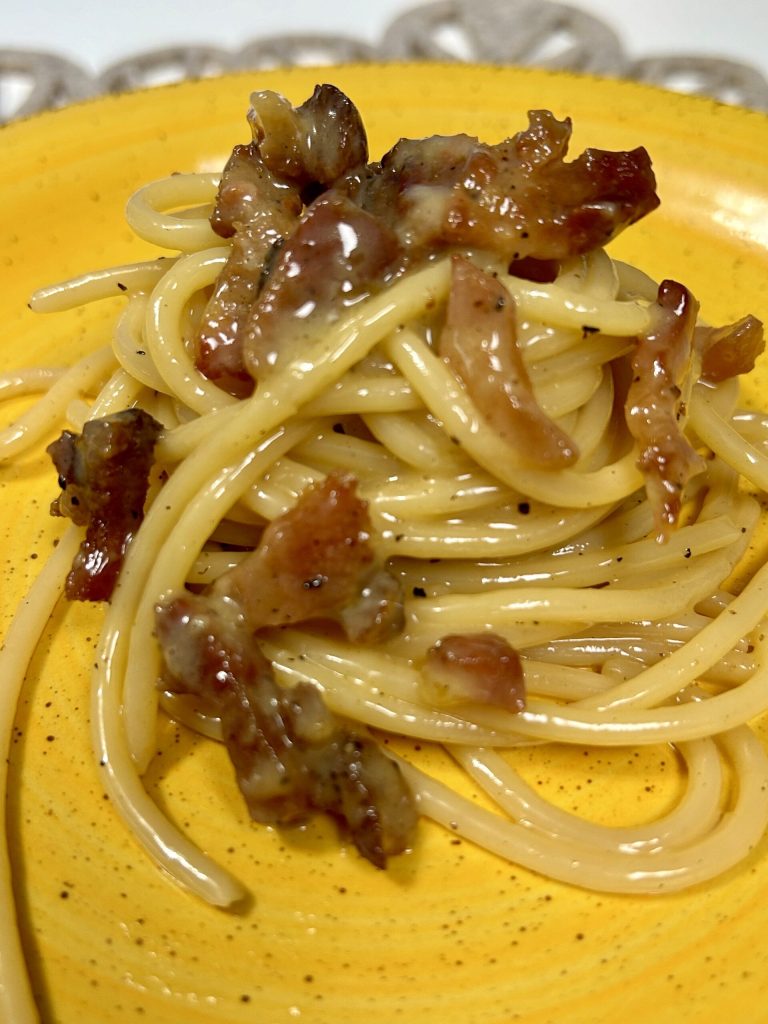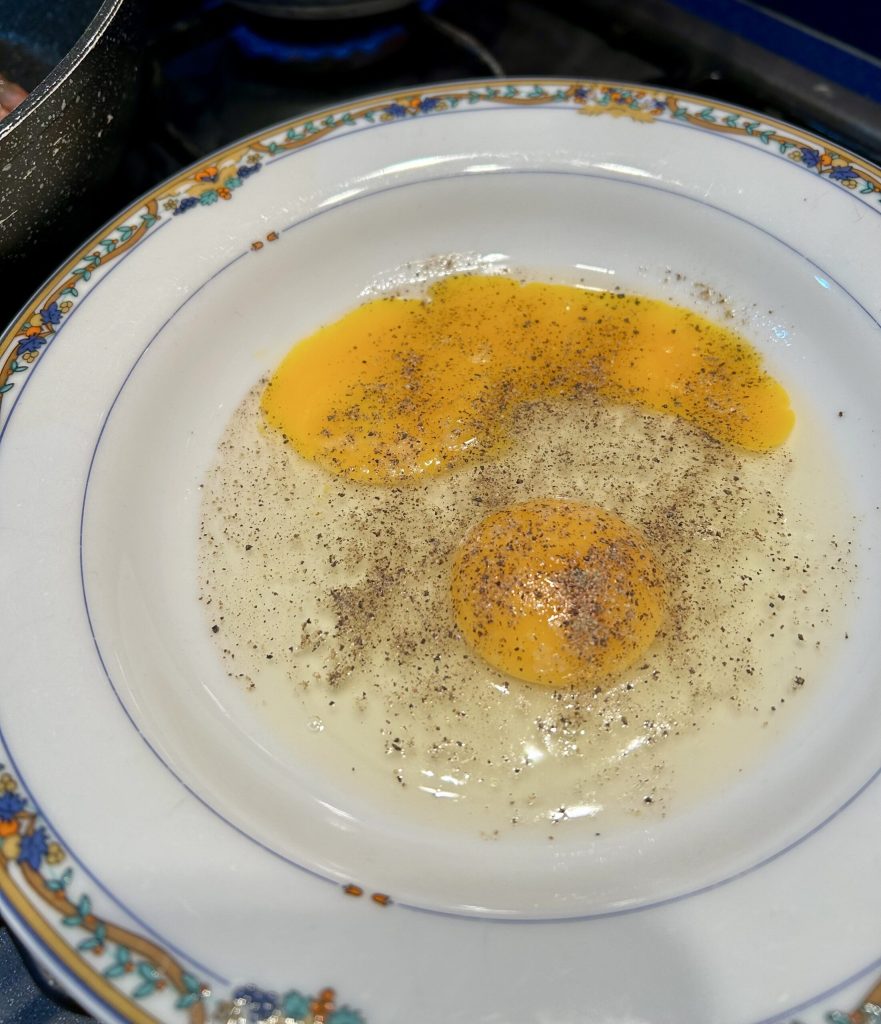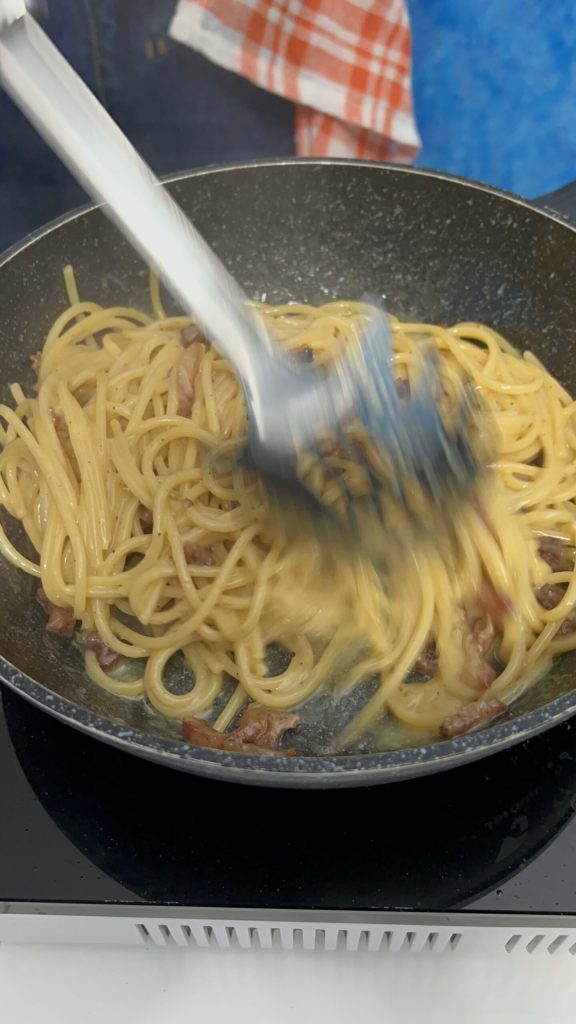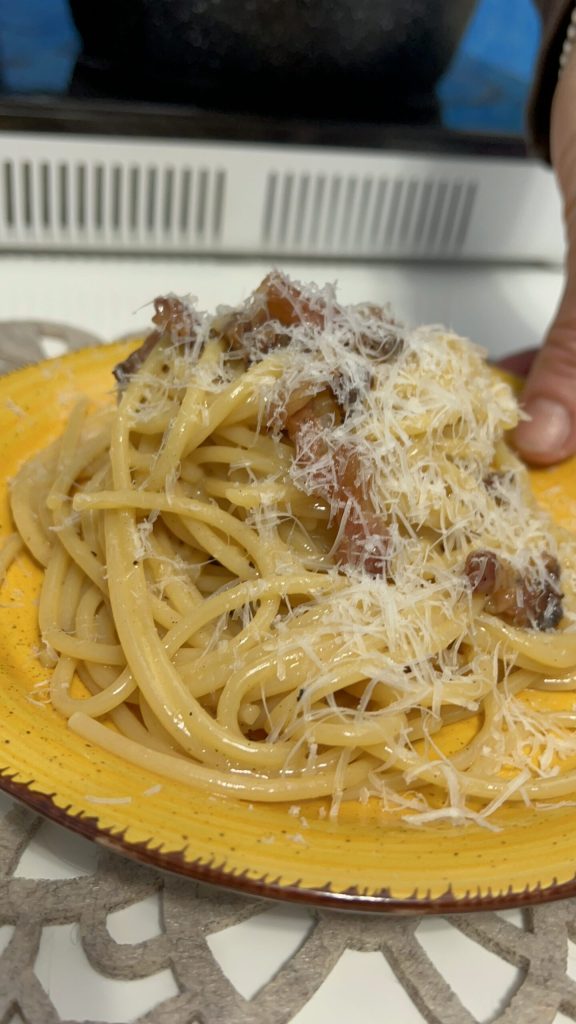Spaghetti Carbonara, a typical Italian dish especially from the Lazio cuisine, prepared with three indispensable ingredients: guanciale, egg, and pecorino cheese.
The guanciale in this recipe cannot be replaced by bacon because its flavor and rich fat composition are essential, allowing you to not add oil to the recipe.
The spaghetti carbonara recipe is quick to prepare. While the water comes to a boil and you cook the pasta, you have enough time to brown the guanciale and prepare the egg cream.
The pasta should be tossed in the crispy guanciale to absorb all its flavor, but the egg cream should be added strictly off the heat. The egg should not cook because it needs to remain creamy, not become an omelet.
With the carbonara sauce, you can create many different dishes, all equally tasty, such as mezze maniche and gnocchetti.
For those who love simple traditional dishes, I also like to mention

- Difficulty: Easy
- Cost: Economical
- Preparation time: 10 Minutes
- Portions: 2
- Cooking methods: Stove
- Cuisine: Italian
- Energy 727.06 (Kcal)
- Carbohydrates 25.18 (g) of which sugars 0.45 (g)
- Proteins 19.05 (g)
- Fat 59.06 (g) of which saturated 23.26 (g)of which unsaturated 29.84 (g)
- Fibers 1.69 (g)
- Sodium 2,774.94 (mg)
Indicative values for a portion of 210 g processed in an automated way starting from the nutritional information available on the CREA* and FoodData Central** databases. It is not food and / or nutritional advice.
* CREATES Food and Nutrition Research Center: https://www.crea.gov.it/alimenti-e-nutrizione https://www.alimentinutrizione.it ** U.S. Department of Agriculture, Agricultural Research Service. FoodData Central, 2019. https://fdc.nal.usda.gov
Ingredients
The indispensable ingredients of carbonara are eggs, guanciale, and pecorino cheese.
- 160 g spaghetti
- 130 g guanciale
- 1 egg
- 1 egg yolk
- 1/4 cup white wine
- 1/3 cup pecorino (grated)
- 1.06 qt water (to cook the pasta)
- 0.14 oz coarse salt
- to taste salt
- to taste pepper
Tools
For cooking carbonara, I recommend a great non-stick stone pan to brown the guanciale well without adding other fats.
- 1 Pan
- 1 Knife
- 1 Cutting Board
- 1 Fork
Preparation
The preparation of spaghetti carbonara is simple and quick, but you need to follow a few simple steps that you can clearly see in the video.
Put the water on the heat with the coarse salt and bring it to a boil. When it boils, add the spaghetti and cook them for the time indicated on the package for al dente cooking. While the pasta is cooking, first slice and then dice the guanciale.

Heat the pan well and brown the guanciale inside, keeping it covered with the lid. Brown it on all sides; it should be crispy on the outside and soft inside. When it is well browned, deglaze with the white wine, let it evaporate for about a minute, and turn off the heat.

Prepare the cream by putting the whole egg and the yolk in a bowl. Add salt, pepper, and half the pecorino cheese intended for the recipe. Be careful when adding salt because pecorino is very flavorful. Mix well with a fork and set the cream aside.

When the spaghetti is almost done cooking, turn on the heat under the guanciale and toss the pasta in it. To drain the pasta, I recommend using only the spaghetti fork. Lift them out of the water, wait for the water to drip off, and transfer them directly to the pan; this helps maintain the right amount of water that keeps the pasta soft.
When the pasta is well tossed, turn off the heat, wait a few seconds for the temperature to drop a bit, and add the cream prepared earlier off the heat.
The eggs should always be added off the heat because they should not cook like an omelet but remain soft and creamy. Now you can decide whether to add the remaining pecorino cheese in the pan or directly on the plates, as I recommend before serving. Your spaghetti carbonara is ready to enjoy.

NOTES
Spaghetti carbonara is best enjoyed immediately after preparation because reheating it would mean cooking the egg further, changing its texture.
If you liked the recipe or have any questions, feel free to comment here or on social media Facebook, Pinterest, Instagram, and X.

